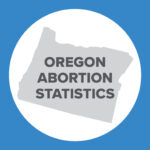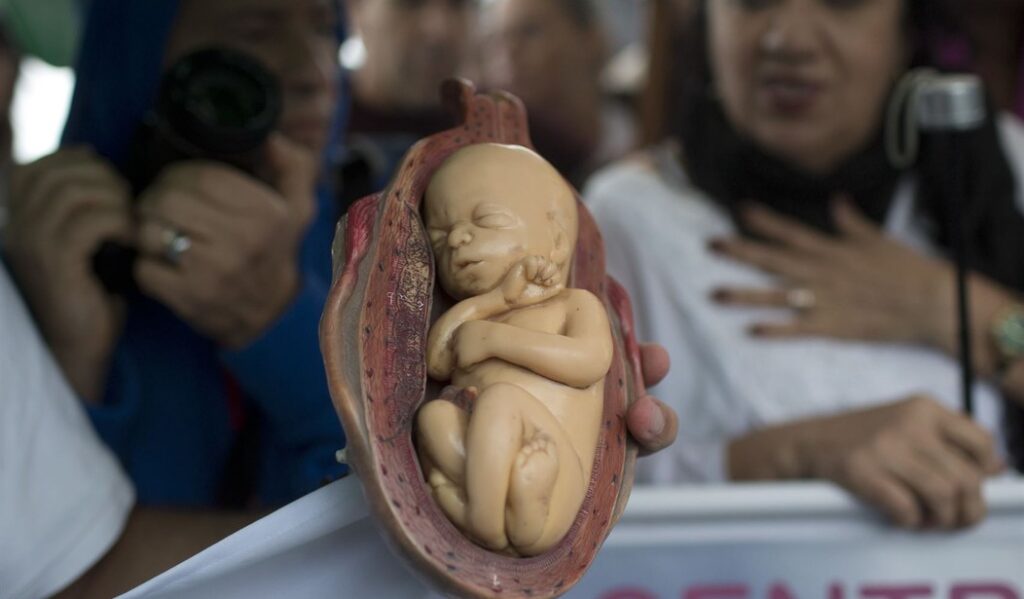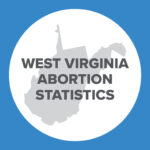How the Legal Status of Abortion Impacts Abortion Rates
One argument frequently made by supporters of legal abortion is that the incidence of abortion is not affected by its legal status. As such, proponents of legal abortion maintain that legalizing abortion will not result in more abortions, but will instead improve the safety of abortions – ensuring they are done by trained medical professionals in sanitary medical settings. Arguments that legalizing abortion will improve various public health outcomes has been a frequent talking point in various political efforts to either legalize abortion or liberalize abortion laws around the world.
However, an extremely broad body of economic and public health research clearly indicates that various legal protections of unborn children reduce the incidence of abortion. Furthermore, there is also a significant body of academic research which shows that even incremental pro-life laws prevent some abortions from taking place. This memo will summarize the academic research that analyzes how the legal status of abortion impacts the incidence of abortion. The first part of this memo will look at the effect of broad legal protections for the unborn. The second part of this memo will summarize the research on the impact of incremental pro-life laws.
Part 1: The Impact of Broad Legal Protections for the Unborn
In both 2012 (Sedge et al.) and 2016 (Sedge et al.), the U.K. medical journal The Lancet released studies which presented abortion rate data from nearly every country in the world. Additionally, in March 2018 the Guttmacher Institute released a study entitled “Abortion Worldwide 2017: Uneven Progress and Unequal Access” (Singh et al.). The three studies are similar. They collect and analyze abortion data from a wide range of countries. They all find that global abortion rates have declined since the early 1990s. Additionally, all three studies present data which demonstrate that abortion rates are declining faster in developed regions of the world than in developing countries.
The cross-country comparisons in these studies typically receive a considerable amount of media attention. The findings purportedly indicate that countries where abortion is legal have similar abortion rates to countries where abortion was legally restricted. In short, abortion rates appear to be unaffected by whether abortion is legal or illegal. These findings receive a great deal of uncritical coverage from the mainstream media. Commentators and pundits frequently cite these studies to argue that pro-life laws are an ineffective strategy to prevent abortions from occurring.
However, a closer look at these three studies indicates that there is far less than meets the eye. According to Guttmacher, only seven developed countries have significant legal protections for the unborn.[1] Conversely, 94 developing countries have significant restrictions on abortion. Most of the countries that restrict abortion are located in Africa, South America, Latin America and the Middle East. These countries have much higher poverty rates and cannot be compared to industrialized democracies in North America and Europe.
Furthermore, in none of these three studies did the authors attempt to hold constant poverty rates, economic growth, demographic shifts, or any other countervailing factors that might affect the incidence of abortion. As such, these two Lancet studies and the 2018 Guttmacher study provide extremely little information about how the legal status of abortion actually impacts abortion rates.
The best study on how the legal status of abortion impacts abortion rates was authored by economists Phillip Levine and Douglas Staiger and appeared in The Journal of Law and Economics in 2004. Unlike the Lancet studies and the Guttmacher study, the authors considered how changes in abortion policy affected the incidence of abortion. After the fall of communism, many Eastern European countries shifted their policies regarding abortion. Specifically, abortion was largely illegal in Romania during the Cold War. However, starting in 1990, abortion on request became legal for the first 12 weeks of pregnancy. Albania and Bulgaria also liberalized their abortion laws in 1991 and 1989, respectively. Conversely, Poland, where abortion had been legal during the first 12 weeks of pregnancy, enacted significant legal protections for the unborn in 1993.
In their study, Levine and Staiger used time series-cross sectional data to analyze how the legal status of abortion impacted abortion rates in a range of Eastern European countries. The authors hold constant economic growth, the inflation rate, and the age composition of women of childbearing age. Their findings provide overwhelming evidence that the incidence of abortion is affected by its legal status. They find that countries where abortion is legal only to save the mother’s life or for specific medical reasons have abortion rates that are only about five percent of the level in countries in which abortion is legal on request.
Furthermore, the results indicated that even modest abortion restrictions have an impact. Countries where abortion is legal only due to medical or social reasons have a 25 percent lower abortion rate than countries where abortion is available on request. This impressive dataset from a range of countries, many of which enacted policy changes regarding the legality of abortion in the late 1980s and early 1990s, clearly demonstrates that legal protections for the unborn save lives.
The Experience of the United States
Additionally, the experience of the United States is also instructive. Colorado was the first U.S. state to liberalize its abortion laws in 1967. The liberalization of abortion laws was debated in many state legislatures during the 1960s and by the end of 1970 abortion was broadly legal in five states: Alaska, California, Hawaii, New York, and Washington. In particular, during the early 1970s, many women seeking abortions travelled to New York because New York did not have a residency requirement for abortion-seeking women and did not require a referral from an in-state physician. Research shows that about 58 percent of the abortions that took place in New York between 1971 and 1972 were performed on women from other U.S. states (Joyce, Tan, and Zhang 2012).
There was relatively little change in abortion policy at either the federal level or state level between the end of 1970 and 1973. However, the Supreme Court’s Roe v. Wade decision in January 1973 effectively legalized abortion on demand in the United States throughout all nine months of pregnancy. Data from the Centers for Disease Control and Prevention (CDC) clearly show that abortion rates in the United States increased in both the short term and the long term.
Between 1972 and 1974, the first full calendar year after abortion was legalized, the abortion rate went up from 13.2 abortions per thousand women of childbearing age to 19.3 abortions per thousand women of childbearing age. After 1973, public support for legal abortion increased, more abortion facilities opened, and abortion rates continued to rise. Between 1974 and 1980, the United States abortion rate went from 19.3 to 29.3, an increase of approximately 52 percent. Clearly, the Roe v. Wade decision dramatically increased the rate and number of abortions performed in the United States.
Part 2: Incremental Pro-Life Laws
After the Supreme Court’s Roe v. Wade decision in 1973, pro-lifers in the United States worked diligently to enact protective pro-life laws at the state level. A range of state level pro-life laws has been enacted during the past 45 years. However, three types of incremental pro-life laws are the most common. First are public funding limits which prevent taxpayer dollars from paying for abortions through state Medicaid programs. Second are parental involvement laws which require that minor girls either notify or receive permission from their parents before obtaining an abortion. Third are informed consent laws which give women seeking abortions information about fetal development, potential health risks of abortion, and various sources of support for single mothers. The research on the impact of each of these three types of pro-life laws is summarized below.
Public Funding Restrictions
A 2009 Guttmacher Institute literature review identified 18 peer-reviewed studies that analyzed the impact of state Medicaid funding restrictions on the incidence of abortion (Henshaw et al. 2009). These methodologically diverse studies utilized abortion data from a variety of sources. Overall, of the 18 studies they considered, 15 found statistically significant evidence that abortion rates fell after Medicaid funding was reduced.
This finding held for studies using time series-cross sectional data to analyze overall abortion rates (Hansen 1980; Haas Wilson 1993, 1997; Meier and McFarlane 1994; Blank 1996; Meier et al. 1996; Levine, Trainor, and Zimmerman 1996; Matthews, Ribar, and Wilhelm 1997; Medoff 2007). It also held for studies using time series-cross sectional data to specifically analyze teen abortion rates (Lundberg and Plotnick 1990; Haas Wilson; 1996; Medoff 1999, 2007). This held as well for studies which analyzed abortion rates in smaller groups of states (Trussell et al. 1980; Korenbrot, Brindis, and Priddy 1990) and for two studies that specifically analyzed the impact of public funding restrictions on pregnancy outcomes in North Carolina (Cook et al. 1999; Morgan and Parnell 2002).
The studies that analyzed data from North Carolina were especially interesting. From 1980 to 1995, North Carolina publicly funded abortion for low-income women – not through Medicaid, but through a state abortion fund which periodically ran out of money. Whenever funds were depleted, the researchers found there were statistically significant decreases in the abortion rate, and months later, statistically significant increases in the birthrate (Cook et al. 1999; Morgan and Parnell 2002). These findings were statistically stronger when the pregnancy outcomes for African-American women were considered. Overall, Cook et al. concluded that 37 percent of the women who would have otherwise had an abortion carried their child to term when funding was not available.
Overall, the authors of the Guttmacher literature review acknowledge that the best research indicates that Medicaid funding restrictions reduce the incidence of abortion. In the discussion which follows the literature review they state that “the best studies…used detailed data from individual states and compared the ratio of abortions to births both before and after the Medicaid restrictions took effect. These found that 18-37 percent of pregnancies that would have ended in Medicaid funded abortions were carried to term when funding was no longer available.” They assert that the Cook and Parnell study which analyzed data from North Carolina had the “best design.” They conclude by stating that “considering the case studies collectively, a reasonable estimate is that a lack of funding influences a quarter of Medicaid eligible women to continue unwanted pregnancies.”
Parental Involvement Laws
A 2009 Guttmacher Institute literature review identified 16 peer-reviewed studies that analyzed the impact of parental involvement laws on the incidence of abortion among either minors or teenagers (Dennis et al. 2009). I was able to identify three additional peer-reviewed studies for a total of 19 studies. Each of these 19 studies finds that parental involvement laws result in a statistically significant decline in the in-state abortion rate for minors.
This is true of studies that analyze time series-cross sectional data on minor abortion rates (Haas Wilson 1993, 1996; Levine 2003; Medoff 2007; New 2007, 2009, 2011; Ohsfeldt and Gohman 1994; Tomal 1999). It is also true of studies that focus on the impact of individual state-level parental involvement laws. There have been separate studies analyzing the laws in eight states including Indiana (Ellertson 1997), Massachusetts (Donovan 1983; Cartoof and Klerman 1986), Minnesota (Donovan 1983; Ellertson 1997; Rogers et al. 1991), Mississippi (Henshaw 1995, Joyce and Kaestner 2001), Missouri (Ellertson 1997; Pierson 1995), South Carolina (Joyce and Kaestner 1996, 2001), Tennessee (Joyce and Kaestner 1996), and Texas (Joyce, Kaestner, and Colman 2006; Colman, Joyce, and Kaestner 2008).
The findings of these studies are very similar. After the passage of a parental involvement law, the research shows there is a statistically significant reduction in the in-state minor abortion rate ranging from 13 percent (Henshaw 1995) to 42 percent (Cartoof and Klerman 1986). Most studies found a decline in the in-state minors’ abortion rate ranging from 15 to 20 percent (Colman, Joyce, and Kaestner 2008; Ellertson 1997; Haas-Wilson 1996; Joyce, Kaestner, and Colman 2006; Levine 2003; New 2011; Ohsfeldt and Gohman 1994; Tomal 1999).
There is ongoing debate about to what extent these in-state minor abortion declines are offset by out-of-state increases. Some studies find that these laws result in a significant increase in the number of minor girls seeking abortions in adjacent states where the laws are more permissive (Cartoof and Klerman 1986; Henshaw 1995; Ellertson 1997; Joyce and Kaestner 2001). Other studies find little evidence that a significant number of minor girls circumvent these laws by obtaining abortions in nearby states (Blum, Resnick, and Stark 1987; Rogers et al. 1991; Joyce, Kaestner, and Colman 2006).
However, the two best studies on parental involvement laws which track and compare, both in-state and out-of-state minor abortions each show that the in-state abortion decline significantly exceeds the out-of-state increase. The first is “Parental Consent for Abortion: Impact of the Massachusetts Law.” This study appeared in the American Journal of Public Health in 1986 and analyzed the Massachusetts parental involvement law which took effect in 1981 (Cartoof and Klerman 1986). The second is “Changes in Abortions and Births and the Texas Parental Involvement Law.” This study appeared in The New England Journal of Medicine in 2006 and analyzed the Texas parental involvement law which took effect in 2000 (Joyce, Kaestner, and Colman 2006). Both studies were unique because they were able to analyze monthly data on in-state minor abortions, out-of-state minor abortions, and births to minors.
These studies found that after the enactment of both the Massachusetts law and the Texas law, the in-state abortion decline clearly exceeded the out-of-state increase. Furthermore, both studies found evidence of short-term increases in the minor birth rate. The Texas study found statistically significant increases in the birth rate of minors who were over 17 and a half years old when they conceived (Joyce, Kaestner, and Colman 2006). Another Texas study which analyzed similar data found that the birth rate for 17-year-olds increased by two percent after the parental involvement law took effect (Colman, Joyce, and Kaestner 2008). The Massachusetts study suggests that in the year after the parental involvement law took effect, anywhere from 50 to 100 minors gave birth — instead of having abortions — as a result of the law (Cartoof and Klerman 1986).
Additional evidence pointing to the effectiveness of parental involvement laws comes from research indicating that the presence of a parental involvement law improves health outcomes for teen girls. A 2003 study in the Journal of Health Economics (Levine 2003) found that parental involvement laws reduce the pregnancy rate of 15- to 17-year-olds by four to nine percent. A 2008 study in the Journal of Law, Economics, and Organization shows that parental involvement laws reduce the gonorrhea rate anywhere from 12 to 20 percent for females under 20 (Klick and Stratmann 2008). Finally, the journal Economic Inquiry published a study which shows that the enactment of parental involvement laws is associated with an 11 to 21 percent reduction in the number of 15- to 17-year-old females who commit suicide (Sabia and Rees 2012).
Informed Consent Laws
There is somewhat less research on the effect of informed consent laws than there is on the effect of other types of incremental pro-life laws. However, the existing research does provide some evidence that properly designed informed consent laws reduce abortion rates. For instance, three studies specifically analyze the impact of Mississippi’s informed consent law which took effect in 1993 (Althaus and Henshaw 1994; Joyce, Henshaw, and Skatrud 1997; Joyce and Kaestner 2000). This law was unique because it was the first that required women seeking an abortion to make two separate trips to the abortion clinic. Each of the three studies found that this informed consent law resulted in a statistically significant abortion rate reduction (Althaus and Henshaw 1994; Joyce, Henshaw, and Skatrud 1997; Joyce and Kaestner 2000).
Two studies by New (2010, 2014) used time series-cross sectional data from nearly all 50 states for a span of 21 years to analyze the impact of a range of pro-life laws – including informed consent laws. His first study analyzed 33 state-level informed consent laws and found that they reduced state abortion rates anywhere from 0.74 to 1.10 abortions per thousand women of childbearing age. This would translate to a decline in the abortion rate of approximately 3.7 percent to 5.6 percent. New’s 2014 study analyzed specific types of informed consent laws. He found that Planned Parenthood v. Casey-style informed consent laws, which require women to view color photos of fetal development prior to the abortion reduce abortion rates anywhere from two percent to seven percent. Additionally, informed consent laws that require two separate visits to the abortion facility reduce abortion rates anywhere from seven percent to 12 percent.
Conclusion
Abortion remains a contentious issue is many countries around the world. In countries where there are legal protections for unborn children, there have been concerted, well-funded campaigns to legalize abortion. In 2017, Chile decriminalized abortion in certain circumstances. There have been efforts to legalize abortion in El Salvador. Finally, this May there will be a referendum in Ireland on whether to repeal the Eighth Amendment which places legal protection for unborn children directly in the Irish constitution.
When there are campaigns to legalize abortion, many aspects of abortion policy are robustly debated. However, one frequent point of discussion is how legalization of abortion will impact the incidence of abortion. The cross-country comparisons in the Lancet studies and the recent Guttmacher study shed little light on this question. That is because most of the countries where abortion is restricted today are developing countries. Comparisons between developing countries and wealthy industrialized democracies where abortion is legal provide little information about how the legality of abortion impacts abortion rates.
Conversely, good research from Eastern Europe where many countries changed their abortion policy after the fall of communism indicate that the incidence of abortion is sensitive to its legal status. Even modest limits on abortion resulted in significant declines in abortion rates. Furthermore, there is good evidence from the United States and Great Britain (Ashton et al. 1983) that abortion rates significantly increased in both countries after abortion was legalized. Furthermore, there is an impressive body of research which demonstrates that a range of incremental, state-level pro-life laws that have been enacted since the Roe v. Wade decision have reduced the incidence of abortion in the United States.
There are several reasons why abortion rates increase when abortion becomes legal. Physicians who are willing to perform abortions can publicly advertise. The economic costs of obtaining an abortion decrease. There is some evidence that public support for legal abortion increases once abortion becomes legal. Additionally, when abortion becomes legal, sexual mores often change, resulting in more unintended pregnancies and more abortions. Overall, the existing academic research paints a very clear picture. Legal protections for unborn children reduce abortion rates and save lives.
[1] Andora, Malta, San Marino. Ireland, Liechtenstein, Monaco, and Poland
Sources Cited
Althaus, Francis and Stanley K. Henshaw 1994. “The Effects of a Mandatory Delay Law on Abortion Patients and Providers.” Family Planning Perspectives 26(5): 228-223.
Ashton, John R., David Machin, Clive Osmond, Rasaratnam Balajaran, Sheila A. Adam and Stuart P.B. Donnan. 1983. “Trends in Induced Abortion in England and Wales.” Journal of Epidemiology and Community Health 37: 105-110.
Blank, Rebecca, Christine George, and Rebecca London. 1996. “State Abortion Rates: The Impact of Policies, Providers, Politics, Demographic, and Economic Environment.” Journal of Health Economics 15(5): 513-553.
Cartoof, Virginia, and Lorraine Klerman. 1986. “Parental Consent for Abortion: Impact of the Massachusetts Law.” American Journal of Public Health 76: 397–400.
Colman, Silvie, Theodore Joyce, and Robert Kaestner. 2008. “Misclassification Bias and the Estimated Effect of Parental Involvement Laws on Adolescents’ Reproductive Outcomes.” American Journal of Public Health, 2008, 98(10): 1881-1885.
Cook, Philip J. Allan Parnell, Michael Moore, and Deanna Pagnini. 1999. “The Effects of Short Term Variation in Abortion Funding on Pregnancy Outcomes.” Journal of Health Economics 18(2): 241- 257.
Donovan, Patricia. 1983. “Judging Teenagers: How Minors Fare When They Seek Court Authorized Abortions.” Family Planning Perspectives 15(6): 259-267.
Ellertson, Charlotte. 1997. “Mandatory Parental Involvement in Minors’ Abortions: Effects of the Laws in Minnesota, Missouri, and Indiana.” American Journal of Public Health 87: 1367–1374.
Haas-Wilson, Deborah. 1993. “The Economic Impact of State Policy Restrictions on Abortion: Parental Consent and Notification Laws and Medicaid Funding Restrictions.” Journal of Policy Analysis and Management 12: 498–511.
Haas-Wilson, Deborah. 1996. “The Impact of State Abortion Restrictions on Minors’ Demand for Abortions.” Journal of Human Resources 31:140–158.
Haas-Wilson, Deborah. 1997. “Women’s Reproductive Choices: The Impact of Medicaid Funding Restrictions.” Family Planning Perspectives 29(5): 228-233.
Hansen, Susan D. 1980. “State Implementation of Supreme Court Decisions: Abortion Rates Since Roe v. Wade.”Journal of Politics 42(2): 372-395.
Henshaw, Stanley K. 1995. “The Impact of Requirements for Parental Consent on Minor’s Abortions in Mississippi.” Family Planning Perspectives 27: 120–122.
Henshaw, Stanley K., Theodore J. Joyce, Amanda Dennis, Lawrence B. Finer, and Kelly Blanchard. 2009. “Restrictions on Medicaid Funding for Abortions: A Literature Review.” New York: Guttmacher Institute.
Joyce, Theodore, Stanley K. Henshaw, and JD Skatrud. 1997. “The Impact of Mississippi’s Mandatory Delay Law on Abortions and Births.” Journal of the American Medical Association. 278(8): 653–658.
Joyce, Theodore and Robert Kaestner. 1996. “State Reproductive Health Policies and Adolescent Pregnancy Resolution: The Case of Parental Involvement Laws.” Journal of Health Economics 15(5): 579-607.
Joyce, Theodore and Robert Kaestner. 2000. “The Impact of Mississippi’s Mandatory Delay Law on the Timing of Abortion.” Family Planning Perspectives 32(1): 4–13.
Joyce, Theodore and Robert Kaestner. 2001. “The Impact of Mandatory Waiting Periods and Parental Consent Laws on the Timing of Abortion and the State of Occurrence among Adolescents in Mississippi and South Carolina.” Journal of Policy Analysis and Management 20(2): 263-282.
Joyce, Theodore, Robert Kaestner, and Silvie Colman. 2006. “Changes in Abortions and Births and the Texas Parental Involvement Law.” New England Journal of Medicine 354: 1031–1038.
Joyce, Theodore, Stanley K. Henshaw, Amanda Dennis, Lawrence B. Finer, and Kelly Blanchard. 2009. “The Impact of State Mandatory Counseling and Waiting Period Laws on Abortion: A Literature Review.” New York: Guttmacher Institute.
Joyce, Theodore, Ruoding Tan and Yuxiu Zhang. 2012. “Back to the Future? Abortion Before & After Roe.” NBER Working Paper No. 18338.
Klick, Jonathan and Thomas Stratmann. “Abortion Access and Risky Sex Among Teens: Parental Involvement Laws and Sexually Transmitted Diseases.” Journal of Law, Economics, and Organization 24(1): 2-21.
Korenbrot, Carol, Claire Brindis, and Fran Priddy. 1990. “Trends in Rates of Live Births and Abortions Following State Restrictions on Public Funding of Abortion.” Public Health Reports 105(6): 555–562.
Levine, Philip. 2003. “Parental Involvement Laws and Fertility Behavior.” Journal of Health Economics 22(5): 861–878.
Levine, Phillip and Douglas Staiger. 2004. “Abortion Policy and Fertility Outcomes: The Eastern European Experience.” Journal of Law and Economics 47: 223-243.
Levine, Phillip, Amy Trainor, and David Zimmerman. 1996. “The Effect of Medicaid Abortion Funding Restrictions on Abortions, Pregnancies and Births.” Journal of Health Economics 15(5): 555–578.
Lundberg, Shelly and Robert D. Plotnick 1990 “Effects of State Welfare, Abortion and Family Planning Policies on Premarital Childbearing Among White Adolescents.” Family Planning Perspectives 22(6): 246–275.
Matthews, Stephen, David Ribar, and Mark Wilhelm. 1997. “The Effects of Economic Conditions and Access to Reproductive Health Services on State Abortion Rates and Birthrates.” Family Planning Perspectives 29(2): 52–60.
Medoff, Marshall. 1999. “An Estimate of Teenage Abortion Demand.” Journal of Socio-Economics 28(2): 175-184.
Medoff, Marshall. 2007. “Price Restriction and Abortion Demand.” Journal of Family and Economic Issues 28(4): 583–599.
Medoff, Marshall. 2009. “Biased Abortion Counseling Laws and Abortion Demand.” Social Science Journal 46: 632-643.
Meier, Kenneth J. and Deborah McFarlane. 1994. “State Family Planning and Abortion Expenditures: Their Effect on Public Health.” The American Journal of Public Health 84(9): 1468-1472.
Meier, Kenneth J., Donald Haider-Markel, Anthony Stanislawski, and Deborah MacFarlane. 1996. “The Impact of State Level Restrictions on Abortion.” Demography 33: 307–12.
Morgan, S. Philip and Allan M. Parnell. 2002. “Effects on Pregnancy Outcomes of Changes in the North Carolina State Abortion Fund.” Population Research and Policy Review 21: 319-338.
New, Michael. 2007. “The Effect of Pro-Life Legislation on the Incidence of Abortion among Minors.” Catholic Social Science Review 12: 185–215.
New, Michael . 2009. “Using Natural Experiments to Analyze the Impact of State Legislation on the Incidence of Abortion.” Catholic Social Science Review 14: 339-362.
New, Michael J. 2010. “U.S. State Tax and Expenditure Limitations: A Comparative Political Analysis.” State Politics and Policy Quarterly 10(1): 25-50.
New, Michael. 2011. “Analyzing the Effect of Anti-Abortion U.S. State Legislation in the Post-Casey Era.” State Politics and Policy Quarterly 11(1): 28-47.
New, Michael. 2014. “Analyzing the Impact of U.S. Antiabortion Legislation in Post-Casey Era: A Reassessment.” State Politics and Policy Quarterly 14(3): 228-268.
Ohsfeldt, Robert, and Stephan Gohman. 1994. “Do Parental Involvement Laws Reduce Adolescent Abortion Rates?” Contemporary Economic Policy 12: 65–76.
Rogers, James, Robert Boruch, George Storms, and Dorothy DeMoya. 1991. “Impact of the Minnesota Parental Notification Law on Abortion and Birth.” American Journal of Public Health 81: 294–98.
Sedge, Gilda. 2012 “Induced Abortion Incidence and Trends Worldwide From 1995 to 2008.” The Lancet 379: 625-632.
Sedge, Gilda. 2016 “Abortion Incidence Between 1990 and 2014: Global, Regional, and Subregional Levels and Trends.” The Lancet 388: 258-267.
Singh, Susheela, Lisa Remez, Gilda Sedgh, Lorraine Kwok, and Tsuyoshi Onda. 2018. “Abortion Worldwide 2017: Uneven Progress and Unequal Access.” New York: Guttmacher Institute.
Tomal, Annette. 1999. “Parental Involvement Laws and Minor and Non-Minor Teen Abortion and Birth Rates.” Journal of Family and Economic Issues 20(2): 149-162.
Trussell, James, Jane Menken, Barbara Lindheim, and Barbara Vaughan. 1980. “The Impact of Restricting Medicaid Financing For Abortion.” Family Planning Perspectives 12(3): 120–123 & 127–130.

























